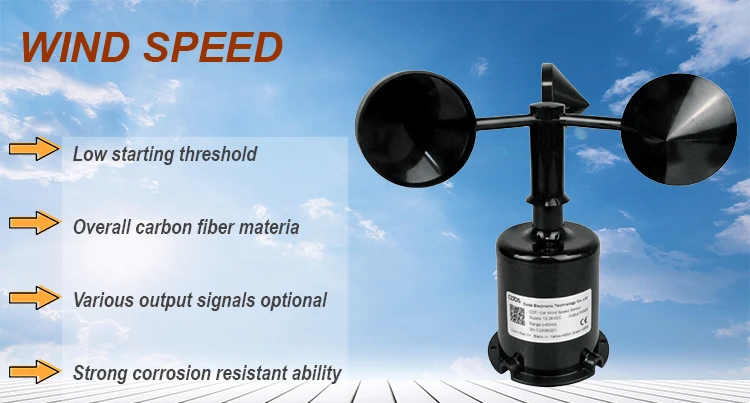
# Wind Speed Measuring Instruments: An Overview
## Introduction
Wind speed measurement is a critical aspect of meteorology, aviation, marine navigation, and various industrial applications. Accurate wind speed data helps in weather forecasting, wind energy assessment, and ensuring safety in outdoor activities. Over the years, several instruments have been developed to measure wind speed with precision. This article provides an overview of the most commonly used wind speed measuring instruments.
## Anemometers
Anemometers are the most widely used instruments for measuring wind speed. They come in various types, each with its own mechanism and application.
### Cup Anemometers
The cup anemometer is one of the oldest and simplest types. It consists of three or four cups mounted on horizontal arms, which rotate when exposed to wind. The rotation speed is proportional to the wind speed, and this data is converted into a readable measurement.
### Vane Anemometers
Vane anemometers, also known as propeller anemometers, use a small propeller mounted on a wind vane to align with the wind direction. The rotation of the propeller is measured to determine wind speed. These are often used in handheld devices for quick measurements.
### Hot-Wire Anemometers
Hot-wire anemometers measure wind speed based on the cooling effect of air flow on a heated wire. The change in electrical resistance of the wire is correlated with wind speed. These are highly sensitive and used in laboratory settings or for low-speed air flow measurements.
### Ultrasonic Anemometers
Ultrasonic anemometers use ultrasonic sound waves to measure wind speed. They consist of multiple pairs of transducers that send and receive sound signals. The time taken for the sound to travel between transducers changes with wind speed, allowing for precise measurements without moving parts.
## Wind Vanes
While primarily used to measure wind direction, wind vanes can also be combined with anemometers to provide comprehensive wind data. The vane aligns itself with the wind direction, and when paired with an anemometer, it offers both speed and direction measurements.
## Pitot Tubes
Pitot tubes are another instrument used to measure wind speed, particularly in aviation. They work by comparing the dynamic pressure of the wind with the static pressure. The difference between these pressures is used to calculate wind speed. Pitot tubes are essential for aircraft to determine airspeed.
## Doppler Radar
Doppler radar is a more advanced technology used to measure wind speed over large areas. It works by emitting radio waves that bounce off particles in the air, such as rain or dust. The change in frequency of the returned waves (Doppler effect) is used to calculate wind speed and direction. This is particularly useful for weather forecasting and storm tracking.
## Applications of Wind Speed Measurement
Wind speed data is crucial in various fields:
– **Meteorology**: For weather prediction and climate studies.
– **Aviation**: To ensure safe takeoffs, landings, and flight paths.
– **Marine Navigation**: To assess sea conditions and plan routes.
– **Wind Energy**: To evaluate potential sites for wind farms and optimize turbine performance.
– **Construction**: To ensure safety during high-wind conditions.
## Conclusion
From simple cup anemometers to advanced Doppler radar systems, the instruments used to measure wind speed have evolved significantly. Each type has its own advantages and is suited for specific applications. Accurate wind speed measurement remains vital across multiple industries, contributing to safety, efficiency, and scientific understanding. As technology advances, we can expect even more precise and versatile wind speed measuring instruments in the future.
Keyword: instrument measure wind speed